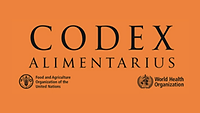FAO/WHO Establishes Recommended Threshold Values for Allergens in Foods

Image credit: bigfatcat via Pixabay
Having previously recommended allergic threshold values for certain priority allergens (cereals containing gluten, crustacea, eggs, fish, milk, peanuts, sesame and tree nuts [almond, cashew, hazelnut, pecan, pistachio and walnut]) in foods, the Food and Agriculture Organization of the United Nations (FAO)/World Health Organization (WHO) Expert Committee on Food Allergens convened for a fifth time to establish thresholds for soy, celery, lupin, mustard, buckwheat, oats, and some tree nuts (specifically, Brazil nut, Macadamia nut, and pine nut).
The thresholds for the allergens broached in the fifth meeting were established using the same methodology developed during prior meetings of the expert committee. The risk-based determination of allergen thresholds serves as the foundation for the recommendations of the committee’s reports on precautionary labelling and derivatives exemption. All of the committee’s recommendations will be used by Codex Alimentarius to inform the development, revision, and application of international standards.
The committee’s final recommended reference dose (RfD) for each allergenic food is as follows, in milligrams (mg) per total protein from the allergenic source:
- Celery: 1 mg
- Soy: 10 mg
- Brazil nut, Macadamia nut, and pine nut: 1 mg
- Mustard: 1 mg
- Lupin: 10 mg
- Buckwheat: 10 mg
- Oat: An oat-specific RfD is unavailable, as Immunoglobulin E (IgE) -mediated food allergy risks identified for oats stem from cross-contact with other grains in oats rather from oats themselves; therefore, an oat-specific RfD would be an inappropriate way of managing the issue.
Previously, the committee established RfDs for 11 allergenic foods, as follows, in mg per total protein from the allergenic source:
- Walnut and pecan: 1 mg
- Cashew and pistachio: 1 mg
- Almond: 1 mg
- Milk: 2 mg
- Peanut: 2 mg
- Egg: 2 mg
- Sesame: 2 mg
- Hazelnut: 3 mg
- Wheat: 5 mg
- Fish: 5 mg
- Crustaceans: 200 mg.
Looking for a reprint of this article?
From high-res PDFs to custom plaques, order your copy today!






